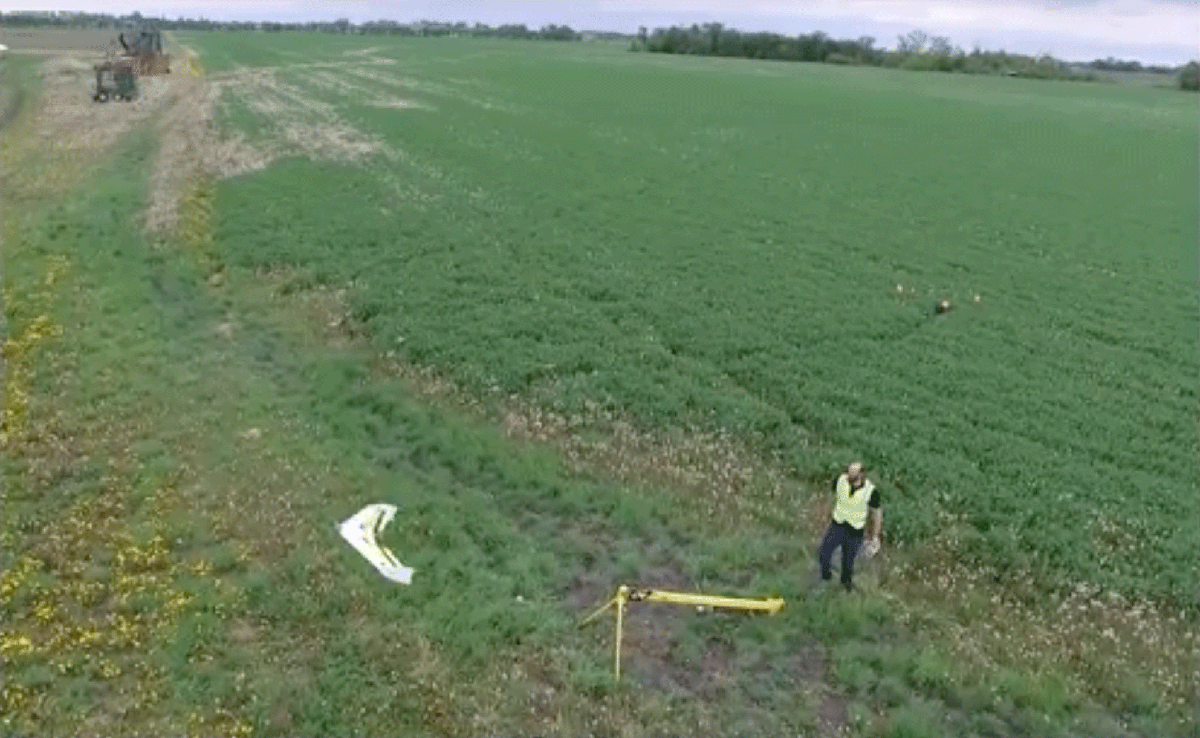Figuring out how drones can be properly utilized in precision agriculture is a challenge that professionals are looking to tackle from a number of different perspectives. Some growers look to service providers to showcase a UAV solution that will be a fit for them, while others are trying to define that setup for themselves. Figuring out the right fit for UAVs on the farm is a critical consideration, but how are farmers supposed to approach such things when details around what works can be difficult to track down?
The just announced program partnership between Manitoba Forage and Grassland Association (MFGA) and M3 Aerial Productions is one that should provide the community with that exact sort of information. The program is an opportunity to bolster MFGA's Green Gold’s on-ground, twice-weekly alfalfa clipping service by utilizing UAVs to make this process more efficient.You can read about of the details of this announcement via the press release below, but I wanted to drill into a few more details around what this program means to and for farmers of all types and sizes. Matthew Johnson, owner of M3 Aerial Productions, was kind enough to run through a few questions with me to further explore that topic and more. Jeremiah Karpowicz: What was the impetus behind this program partnership?Matthew Johnson: The Green Gold program has been in place for 20 years. Drone technology was the impetus behind the partnership, as it will allow them the possibility of decreasing time lag between field observation and results. M3 Aerial Productions is a leader in the field of UAV-Ag technology in Manitoba so it fit right into their ideas of how they could improve their program. In what tangible way or ways do you think the MFGA will be able to see the results of this program? Will that difference be something they most notice operationally, or when they look at the results? I am expecting, as well as the MFGA, that the NDVI results from our study will show a correlation with the cutting samples that are analyzed in the lab. Though NDVI is often used for helping determine areas of weaker growth within a crop, in this situation we are using calibrated NDVI results from a MicaSense Sequoia multi-spectral sensor to analyze changes in the crop over time. When the crop reaches the optimal point, we are hopeful that there will be a measurable relation with the aerial imagery. The implications of this are such that alfalfa growers across a wide region will be able to know the exact date when they should harvest their crops, as early in the day as 8 or 9 AM - allowing them the entire day to execute. This situation is ideal, vs. the current situation where sample cuttings are analysed in the lab and results are not returned until the day after, meaning there could be a day of lost productivity. You mentioned that UAVs can increase efficiency and profitability while decreasing waste and environmental impacts. Are these elements something that users need to focus on specifically achieving when they’re looking to utilize a drone, or are they all inter-related? That is to say, as a drone increases the efficiency a user can see, will that usage inherently decrease waste as well?If a farmer doesn't need to apply fungicide or insecticide to an entire crop, and can rather focus 1/2 or 1/4 of the amount that actually require the treatment, they will not only save thousands of dollars (per application), but that is a cumulative amount of chemicals that would not be released into the environment. Also, there is a notable savings in the burning of fossil fuels, and all of the other environmental overhead that accompanies crop applications. If a farmer wants to specifically explore how this technology can impact the way they approach their work, what’s the best thing they can do to start that process?The price tag on drones has come down quite a bit, even in just the last 12 months. Farmers can purchase UAVs to help crop scout for as little as $1500 for a good, reliable unit. But these "cheaper" UAVs are bordering on "toys" and do not provide the data that farmers require to make the kind of decisions that end up saving them money. UAVs and sensors that provide that kind of data are upwards of twenty- to thirty thousand dollars or more. At that price tag, it makes the idea of an individual farmer investing in this technology less lucrative. The return on investment for these "heavy duty" agricultural UAVs are not as easily witnessed by the solo farmer. The benefit for the farmer comes from the service providers, who have the equipment, training, permits, and insurance to provide these services at reasonable rates, that end up working well for the growers. If you can determine that your quarter section needs a top-dressing of N a week before you had it scheduled, the bonus yield increase will dwarf the costs of the service. The release is below, but you can also take a look at some B-roll footage M3 filmed this past Sunday (29 May, 2016) &feature=youtu.beSubscribe
The information you submit will be stored and used to communicate with you about your interest in Commercial UAV News. To understand more about how we use and store information, please refer to our privacy policy.
June 2, 2016
Demonstrating How Drones Can be Properly Utilized on the Farm
















Comments